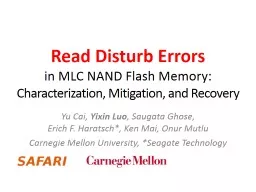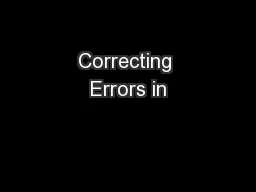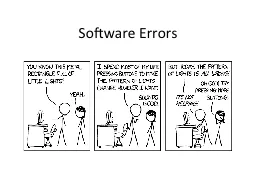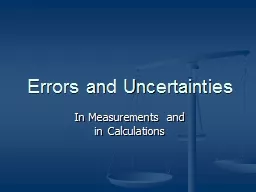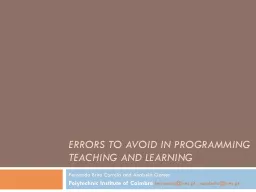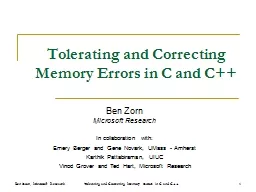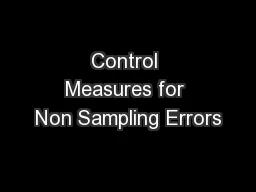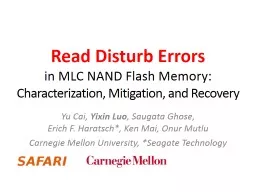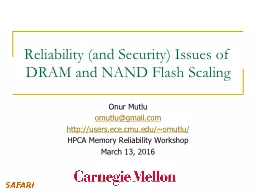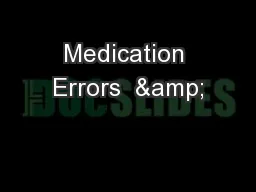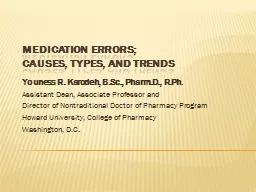PPT-Read Disturb Errors
Author : min-jolicoeur | Published Date : 2019-12-09
Read Disturb Errors in MLC NAND Flash Memory Characterization Mitigation and Recovery Yu Cai Yixin Luo Saugata Ghose Erich F Haratsch Ken Mai Onur Mutlu Carnegie
Presentation Embed Code
Download Presentation
Download Presentation The PPT/PDF document "Read Disturb Errors" is the property of its rightful owner. Permission is granted to download and print the materials on this website for personal, non-commercial use only, and to display it on your personal computer provided you do not modify the materials and that you retain all copyright notices contained in the materials. By downloading content from our website, you accept the terms of this agreement.
Read Disturb Errors: Transcript
Download Rules Of Document
"Read Disturb Errors"The content belongs to its owner. You may download and print it for personal use, without modification, and keep all copyright notices. By downloading, you agree to these terms.
Related Documents

